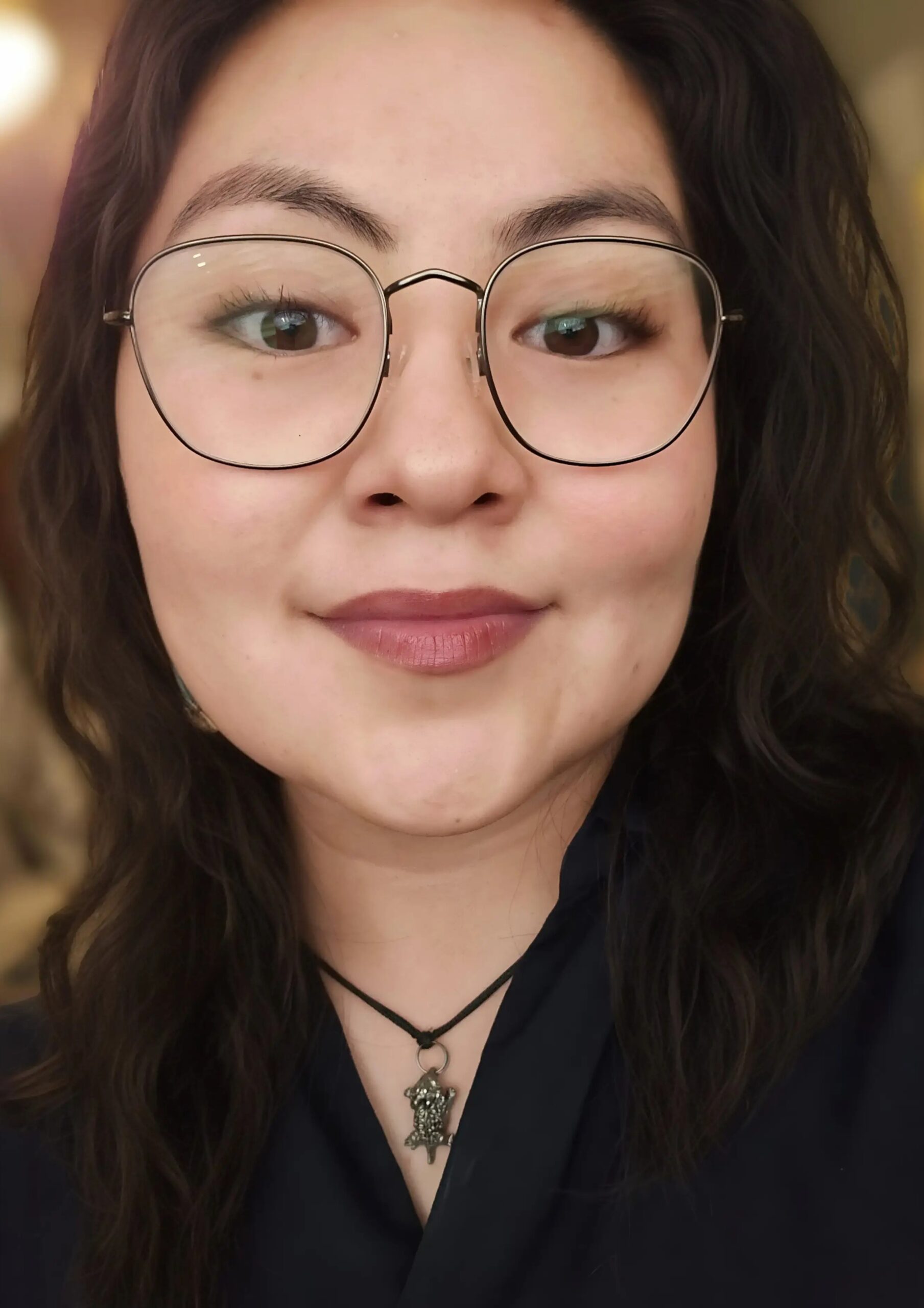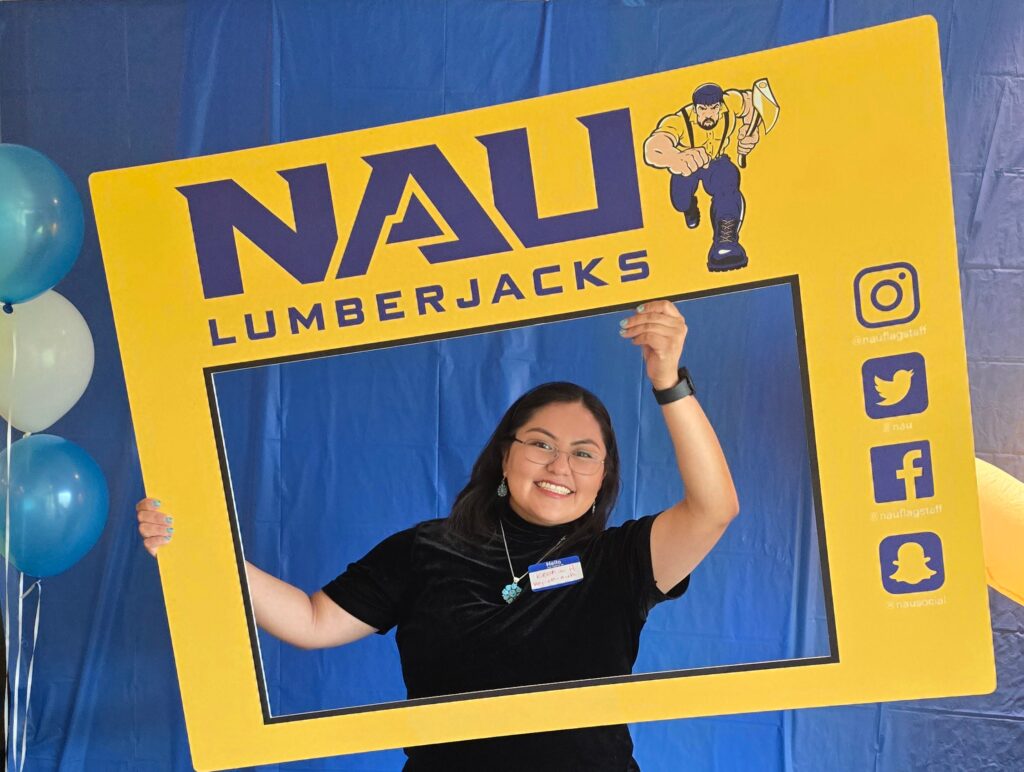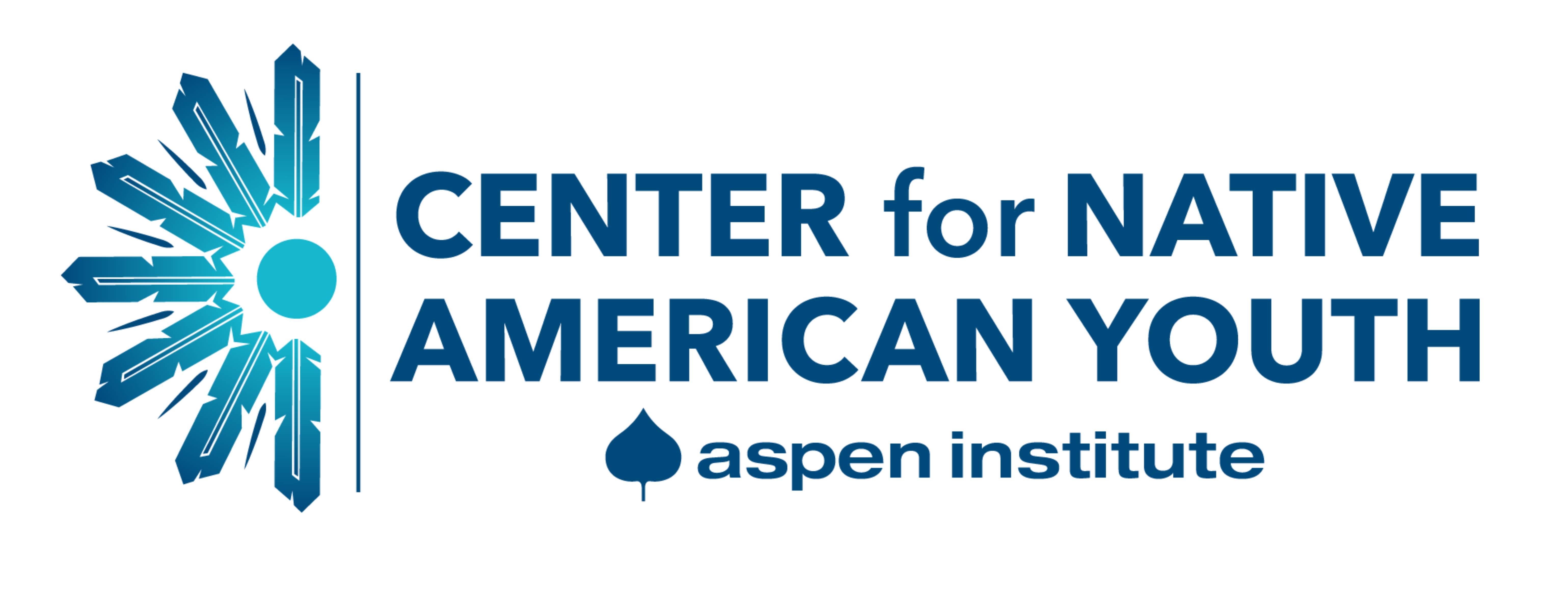Yá’át’ééh shik’éí dóó shidiné’é (Hello my relatives and friends), my name is Keona Hosteen. I also go by the name Ona. My traditional four clans that identify who I am as a Diné (Navajo) woman are Red Bottom (Tł’ááshchí’í), Red Running into the Water (Táchii’nii), Zuni (Naasht’ézhi Dine’é) and Water’s Edge (Tábąąhá).
I am currently a graduate student at Northern Arizona University (NAU) in Flagstaff, AZ, majoring in Clinical Speech-Language Pathology (SLP). I also serve as a graduate assistant for the Communication Sciences and Disorders Department at NAU. In addition, I’m part of the Native Journey to Academic Success (NJACS) program, which has provided strong support for me and other Native students in the College of Health and Human Services (CHHS).
As the American Speech-Language-Hearing Association (ASHA) explains, speech-language pathologists “work to prevent, assess, diagnose, and treat speech, language, social communication, cognitive-communication, and swallowing disorders in children and adults.”

What I love most about this field is the wide variety of settings SLPs can work in, ranging from medical settings and schools to private practices, veterans’ affairs and nursing homes. This flexibility allows professionals like myself to find their passion and support people in meaningful ways.
Communication — whether it’s texting, calling, emailing or simply expressing our wants and needs — is something many of us take for granted. But for those with communication-related disorders, it can be incredibly challenging. SLPs work with individuals who have disorders related to language, cognition and motor ability, such as stroke survivors and individuals with cerebral palsy, autism, dysarthria and dysphagia. We also support those struggling with phonological disorders that affect speech clarity from childhood into adulthood. Another area SLPs help with includes theory of mind skills, which is our ability to understand others’ thoughts, feelings and perspectives. These areas require not just technical skills but a high level of awareness, compassion and engagement, which has made me more mindful of how I interact with people every day.
My passion for becoming an SLP is rooted in a deep desire to help others, something that’s been instilled in me since I was young. I’ve always been known to have a big and warm heart, which has only grown over time. Growing up on the Navajo reservation – in a small community called Standing Rock, NM – I was surrounded by relatives whose ways of speaking, moving and interacting I didn’t always understand. As I’ve grown and learned more about communication disorders, I now see those experiences as the spark that led me to this field.
Another major influence in my journey is the power and importance of language. Though I am not someone who fluently speaks the Diné (Navajo) language, our traditional clan system is a deep cultural reminder of who we are and where we come from. It affirms that, as Native people, we are still here. We carry our ancestors’ strength with us and we continue to walk in their footsteps.

Being one of the few Native American students in my graduate program sometimes feels like a heavy responsibility. At the same time, it’s a powerful reminder that I do belong in these spaces – spaces from which Native people were historically excluded. I constantly reflect on the strength and resilience that brought me here. Being “comfortable with being uncomfortable” is something I’ve learned to embrace, and I’ve realized that this adaptability is a gift that many Native people share. We are observant, we listen deeply, and we approach challenges with heart and intention.
This perspective directly informs how I see my future work as a speech-language pathologist: advocating for clients, supporting their communication needs and providing culturally-responsive care. Whether it’s through rehabilitation, education, research or simply listening, I want to help individuals navigate the stepping stones toward better communication, both verbal and nonverbal.
Being in this program has affirmed that there is a critical need for speech and communication-related services, especially in underserved areas like the Navajo Nation. Representation matters. When people see providers who look like them, who understand where they’re from, and who value their culture, it can truly make a difference.
I hope that by sharing my story, I can inspire other Native youth to explore careers in the health and communication fields. There is a place for us here. And together, we can build stronger, more connected communities. Thank you for this opportunity!
—
At the Center for Native American Youth (CNAY), our mission is to improve the health, safety and overall well-being of Native American youth. We work for and with Native youth like you to ensure you have the opportunity to drive your own narrative focused on your strengths, culture and the positive things you do every day.
To be featured on our digital platforms, please complete the CNAY Youth Highlight Form. To date, our social channels – including Facebook, X (Twitter) and Instagram – have a reach of more than 35,000 followers. You can use this form to highlight your solutions to challenges facing your community, showcase your culture, or amplify your latest project, activity or event.
Are you part of a youth council or student group? Show us your work! Do you have an opinion on environmental justice that you want to share? Work with us on a featured blog! Do you want to be a role model for other Native youth? Let us feature you! We can also help you grow skills on social media, writing blogs, interviewing or creating digital content. Questions? Contact Jamie Levitt: jamie.levitt@aspeninstitute.org

